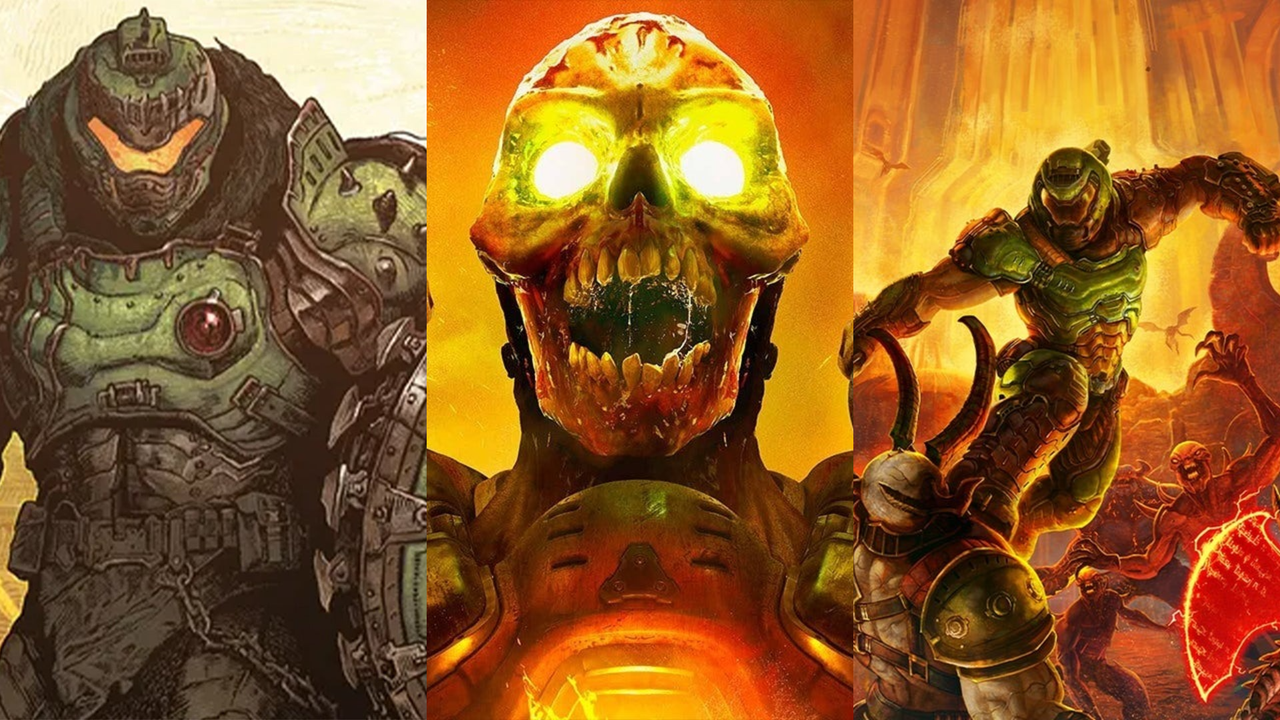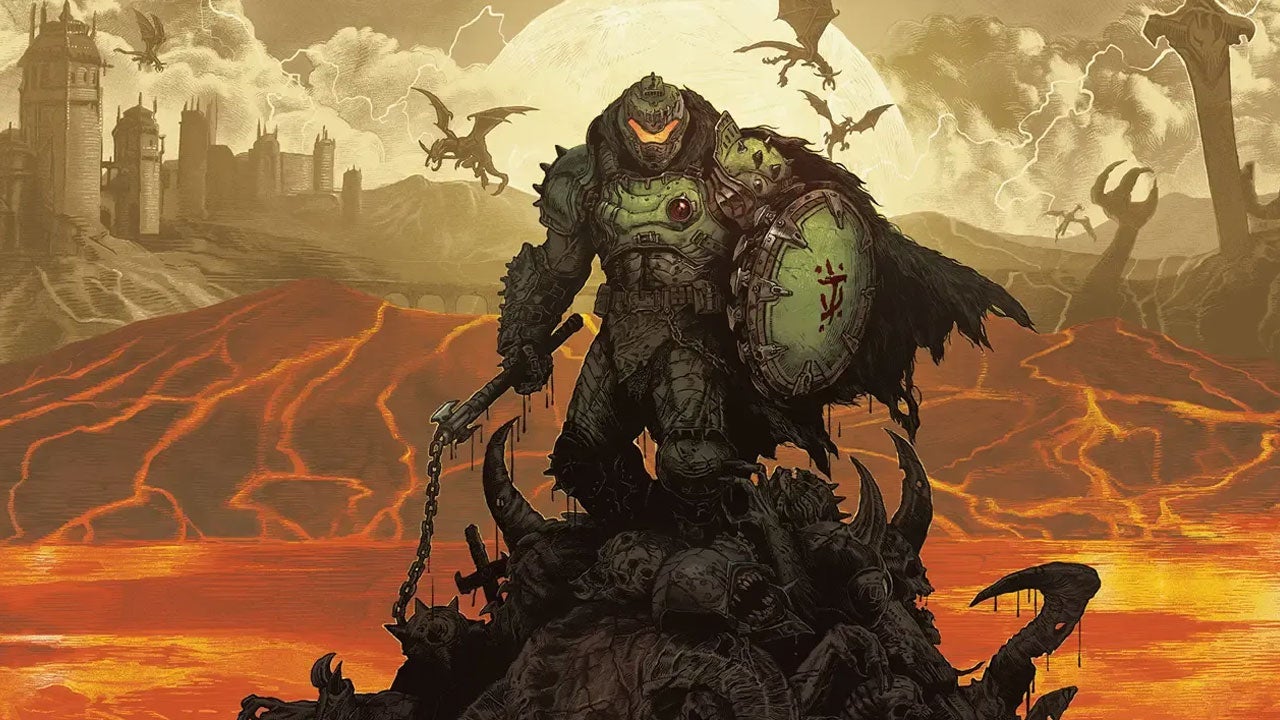Rip and tear through the ages!
From the pixelated hellscapes of the original Doom to the glorious, gore-soaked spectacle of Eternal, the iconic shooter franchise has been ripping and tearing its way through our hearts (and demons) for over three decades. But with so many iterations, expansions, and reboots, where does one even begin to rank the games?


A Different Kind of Doom
Doom 3, released in 2004, marked a significant departure for the franchise, shifting its focus from frenetic action to a more deliberate and atmospheric survival horror experience. This change was largely driven by John Carmack’s desire to showcase the impressive lighting and shadow capabilities of the IdTech 4 engine.
The game’s environments, characterized by dark, claustrophobic corridors and flickering lights, were designed to evoke a sense of dread and vulnerability. The use of realistic physics and sound design further enhanced the immersive horror experience. Enemies, often concealed in the shadows, lurked around corners and emerged unexpectedly, forcing players to rely on their flashlight and limited ammunition to survive.
Combat in Doom 3 was slower and more methodical than in its predecessors. Players had to carefully manage their resources, conserving their limited ammo and health packs while utilizing strategic flanking maneuvers and environmental traps.
Loved and Hated
Doom 3’s departure from the series’ established formula was met with a mixed reception. While some praised its innovative atmosphere and immersive horror elements, others criticized its darkness, slow pace, and departure from the classic Doom gameplay.
The game’s reliance on darkness as a gameplay mechanic proved to be particularly divisive. While it effectively created a sense of tension and suspense, it also frustrated many players who found it difficult to see enemies and navigate the environment.
Despite the controversy, Doom 3’s influence on the first-person shooter genre was undeniable. Its emphasis on atmosphere, sound design, and strategic combat influenced a generation of developers, paving the way for games like Gears of War and Bioshock.
The Legacy of the “Flaw”
The enduring debate surrounding Doom 3’s darkness mechanics highlights the complexities of game design and player preference. While some found it an integral part of the game’s atmosphere and tension, others viewed it as a frustrating obstacle.
Ultimately, the “flaw” of Doom 3’s darkness reflects the game’s willingness to experiment and innovate, even if it meant alienating some fans. It serves as a reminder that pushing boundaries can lead to both groundbreaking achievements and controversial decisions.
A Unique Side Passage (Doom 64)
Midway’s Take
Doom 64, released in 1997, was developed by Midway Games under the supervision of id Software. While not directly part of the main storyline, it expanded upon the Doom mythos and provided a unique perspective on the franchise.
Midway’s lack of experience with the Doom engine necessitated a shift in visual style. Instead of using digitized sprites, Doom 64 employed pre-rendered 3D models for its enemies, giving them a more detailed and stylized appearance.
N64 Limitations and Strengths
The Nintendo 64’s technical limitations presented both challenges and opportunities for Doom 64’s development. The console’s cartridge format restricted the amount of data that could be stored, leading to a smaller number of enemies and less complex level designs compared to its PC counterparts.
However, the N64’s powerful graphics capabilities allowed for impressive pre-rendered graphics and atmospheric lighting effects.
A Cult Classic
Despite its technical limitations and departures from the original Doom formula, Doom 64 developed a dedicated following among fans. Its unique art style, challenging gameplay, and expanded lore cemented its status as a cult classic within the Doom community.
Modern Mayhem (Doom 2016 & Doom Eternal)
The Rebirth of Glory
Doom 2016, released in 2016, marked a triumphant return to form for the franchise. It revitalized the classic Doom gameplay, emphasizing frenetic action, aggressive movement, and satisfying gunplay.
The game was a critical and commercial success, lauded for its fast-paced combat, visceral graphics, and exhilarating soundtrack.
Mastering Movement
Doom Eternal, released in 2020, further refined the movement mechanics introduced in its predecessor, emphasizing fluid and dynamic combat. Players could dash, slide, climb, and double jump, allowing for a greater sense of control and agility during intense firefights.
The introduction of new gameplay mechanics, such as the grapple hook and the ability to chainsaw enemies to replenish ammo, added layers of depth and strategy to combat.
Expanding the Universe
Both Doom 2016 and Doom Eternal contributed to the ongoing expansion of the Doom universe, delving deeper into its lore and mythology. They introduced new characters, factions, and locations, enriching the world-building and deepening the narrative.
These games also explored themes of redemption, corruption, and the cyclical nature of violence, adding a layer of philosophical complexity to the franchise.
Conclusion
The Eternity of Doom: A Legacy Reckoned
In our exhaustive ranking of every Doom game, IGN has delved into the depths of id Software’s most iconic franchise, dissecting the highs and lows of a storied history that spans over three decades. From the groundbreaking 3D gameplay of the original Doom to the modern, fast-paced action of Doom Eternal, our list has revealed a narrative of innovation, experimentation, and unrelenting passion. By analyzing each installment’s strengths and weaknesses, we have shed light on the evolution of the series, highlighting pivotal moments that have shaped the genre and cemented Doom’s status as a gaming behemoth.
The significance of this ranking cannot be overstated, as it serves as a testament to the enduring appeal of Doom’s blend of intense action, dark humor, and uncompromising difficulty. The franchise’s influence can be seen in countless other games, from the FPS genre to the broader realms of gaming culture. Moreover, our ranking has implications for the future of the series, as it provides a roadmap for id Software and other developers to build upon the foundations laid by their predecessors. As the gaming landscape continues to evolve, one thing remains certain: Doom will remain a benchmark for quality, innovation, and sheer, unadulterated fun.
As we gaze into the abyss of the future, one question lingers: what’s next for the Doom franchise? Will id Software continue to push the boundaries of what’s possible, or will another developer take the reins and forge a new path? One thing is certain: the legacy of Doom will endure, a testament to the power of gaming to captivate, inspire, and push the human spirit to its limits. Until the next chapter in this eternal saga unfolds, the question remains: will you survive the horrors that await in the depths of Hell?